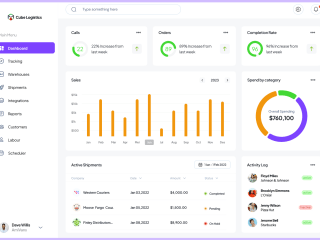UX/UI Design For Rumi 1.0 Mobile App

Gerald Mwanu

A little trip down memory lane..
Back in 2016, I joined the university, desperate to ascend to my dreams and graduate top of my class. I was fortunate enough to secure on campus accommodation, which was in quite some bad shape. A cubicle, subject to be co-shared space amongst six men, people I never knew, I never met, but expected to be my family for the next 3 months. Boy that was tough!
“Most campus students have a really tough time studying in the old, unmaintained school hostels. Some opt to get accommodation elsewhere but can’t afford it and they start the hunt for a roommate who they can live with, a really tough and important decision”
Back to story time..
Fast forward I opted to move and secure housing outside school, living alone and later opting to find someone who I knew very well over the last semester to co-share an apartment with. Apart from having to vet someone who was trustworthy enough and most likely a classmate, I had a tough time deciding on a space based on my low budget and how to convince a possible roommate to split costs in half.
Well, long story short.. It didn’t work and I had to live all alone. Finding a suitable roommate was hard!
Okay I have to do something about this..
So I decided to code an entire web application back in 2020, alongside frontend and backend developers which solved the problem. However, for the usability and design aspect of the application, there was no design thinking, no user experience factored in. How were we going to solve the challenge at hand with UX problems?
The typography was off, UX design principles WERE NOT thought of while building the web app, it wasn’t User nor Human centered. All we wanted to do then is to have the user give input, ensure the backend processed the data and voila, results were given.
Don’t judge, this is how it looked

Okay, enough, off to Research
So I pitched the idea to my university professor and luckily enough we started research. We did this in two phases - first some desktop research that aimed at uncovering facts on the current housing situation for university students on a national and global perspective.
Later we did phase two, where we conducted interviews to validate and invalidate some of the assumptions carried, gather actual feedback from students to help flesh out possible areas of exploration then build empathy maps, affinity maps, personas and user journey maps.
How might we get students comfortable with their living experience in school?
Understanding our target users
Upon approaching students from 5 universities across different locations, it was important to gain a clear understanding on the current housing situation and how cost sharing by co-renting was working for students with low budgets.
We did 12 interviews, 6 students who lived on campus and 6 who lived outside campus. Our goals were;
- Dynamics in pricing of in campus & outside campus hostels
- Their experience with on campus living (with roommates)
- Their journey through finding roommates to cost share rent
- Understanding how they make decisions.

Interesting Statistical Findings
Remember the desktop research we did in phase one? This is what we found out:
- On average, the majority of higher institutions in Kenya, only cater to approximately 22.6% of their student population.
- There is a rapidly growing Student Population, which is expected to grow by 15.5% to 919,400 in the 2018/19 academic year
- The student housing market in Kenya tends to be fragmented. Majority of housing in major established schools ranging from studio units to shared apartments
- The majority of the stock is old and rundown buildings lacking in necessary student services such as ample security, and reliable internet access.
- The average monthly rent per person decreases with average monthly rent per person for a 6-sharing apartment totaling USD 1.68 (Kes 270) per SQM
- Shared living recorded the highest occupancy rates in comparison to single living owing to the fact the majority of the students choose to forego privacy to save on rental costs.
- On average, the private hostels charge USD 54.30 (Kes 8,742) per month compared to campus-let hostels, which charge a maximum of USD 6.21 (Kes 1,000) per month.
Well, would you look at that! Even more challenges got uncovered from mere Literature reviews. But was this really the case for students on ground? Was my case unique or were the publications featuring inflated statistics?

Arising themes
- Living standards of student hostels are not for the faint and can propel an unconducive environment for students. Quote: “I lived on campus and the conditions were terrible. Bedbugs, poor sanitation, theft and I decided to leave and get my own apartment outside campus.”
- On campus hostels have limited space and the cubes to students ratio is overwhelming and imbalanced. Quote: “I find it difficult to stay on campus. Although it’s cheaper, It’s a bit hectic for me because of the small sized cubicles. I can’t stand that many people in my personal space, especially where I sleep.”
- Most students would love to move to off-campus accommodation but have quite a challenge finding suitable roommates to share and live with. Quote: “I took quite some time before I could find a roommate because I didn’t want to live with just anybody.”
To our surprise, it seemed that what we considered as a problem was just just the tip of the iceberg, apparently. Here it got a little bit confusing and what we came thinking we could hack on seemed like child’s play in comparison to other challenges students faced with housing.
Okay we have data, now what..

With agreed focus on the trivial and non trivial, we saw it fit and based on the data we got from desktop research and other qualitative methods of research, to explore roommate searching as an opportunity area.
Why? Why?Why?why?why? Okay enough whys…
Reason being this was the overarching theme that had a touchpoint with the rest and one that could potentially help us execute our how might we statement, carrying our initial goal til the end.
Secondly, with budget constraints, this is the best we could do to try achieve our desired solution.
Brainstorming
In a couple of sessions, we tried to map out the entire user journey from when they encounter the challenge all the way to a possible decision that they would make. This would help us form and ideate later on.

Ideation
Given our research findings, we decided to come up with a digital solution or platform which would see through a proper user journey towards decision making and solving the problem at hand.
The application would be categorized by three important features that we considered crucial to the survival and efficiency of the application;
- Proper and easy onboarding
- A roommate matching feature
- A chat/direct message feature
Evaluation: Concept Testing.
To test out the features suggested for the application, we resulted in carrying out concept tests to validate ease of use, efficiency and how the overall solution worked towards fulfilling user needs.
Success of the concept test was determined to meet one key goal in the user journey and that was; To enhance face-to-face interaction and improve the overall decision-making process for users.
We developed scenarios and tasks which involved using the matching feature to arrange meet-ups and direct reach out through the chat feature. We then gathered feedback on ease of use, clarity of the onboarding, matching procedure and overall satisfaction.
During the test, I observed user interactions, noted hesitation and difficulties as well as collection of verbal feedback. The quantitative data collected featured success rates, completion times and errors encountered.
Qualitative feedback through asking about the overall experience, likes and dislikes also build a foundation for improvement.
Iterative Design
Recurring pain points and challenges painted a pattern which I analyzed and made iterations on, later performing A/B tests which eventually saw through addition of tooltips for guidance and deploying behavioral psychology to leverage onboarding and retention of users.
Eventually, we were able to come up with an interactive prototype, after having iterations on feedback from testing.
The solution

Key Takeaways
- Prioritize user needs and preferences for a personalized experience.
- Conduct iterative concept testing to refine features based on user feedback.
- Implement features based on quantitative and qualitative data.
- Streamline onboarding for a smoother user initiation.
- Address both immediate and broader life goals for a holistic user experience.
- Embrace continuous improvement based on user feedback and analytics.



